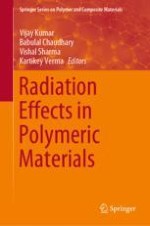This book provides an introduction of how radiation is processed in polymeric materials, how materials properties are affected and how the resulting materials are analyzed. It covers synthesis, characterization, or modification of important materials, e.g. polycarbonates, polyamides and polysaccharides, using radiation. For example, a complete chapter is dedicated to the characterization of biodegradable polymers irradiated with low and heavy ions. This book will be beneficial to all polymer scientists in the development of new macromolecules and to all engineers using these materials in applications. It summarizes the fundamental knowledge and latest innovations in research fields from medicine to space.
